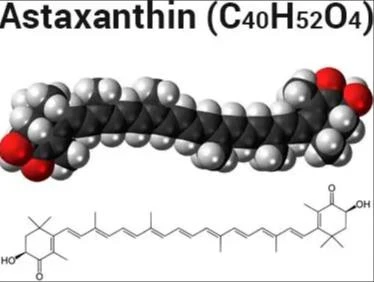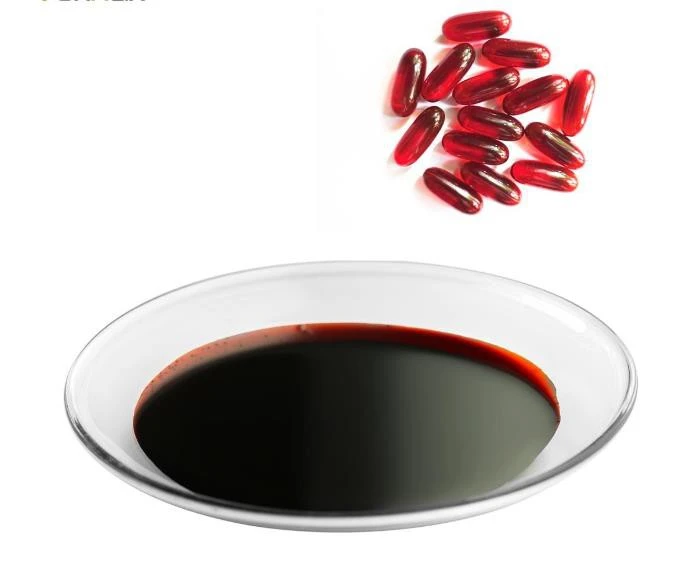Top Benefits of Using Astaxanthin Sources in Plants
In the rapidly evolving landscape of natural health supplements and functional ingredients, astaxanthin sources in plants have emerged as one of the most sought-after compounds for their remarkable therapeutic properties and diverse applications. This powerful carotenoid pigment, naturally occurring in various plant sources and microalgae, represents a breakthrough in modern nutraceutical science, offering unprecedented antioxidant capacity that surpasses traditional compounds by significant margins. The growing interest in astaxanthin extract from plant-based sources stems from its exceptional bioavailability, safety profile, and multifaceted health benefits that span across pharmaceutical, cosmetic, and nutritional industries, making it an indispensable ingredient for manufacturers seeking to develop premium-quality products that meet the increasing consumer demand for natural, effective health solutions.

Superior Antioxidant Properties and Cellular Protection Benefits
Enhanced Free Radical Neutralization Capacity
Astaxanthin sources in plants demonstrate unparalleled antioxidant capabilities that significantly exceed those of conventional antioxidants, including vitamin C, vitamin E, and beta-carotene. There is currently much interest in biological active compounds derived from natural resources, especially compounds that can efficiently act on molecular targets, which are involved in various diseases. The unique molecular structure of astaxanthin extract allows it to span cell membranes completely, providing protection to both water-soluble and fat-soluble compartments of cells simultaneously. This distinctive characteristic enables astaxanthin to neutralize multiple types of reactive oxygen species, including singlet oxygen, hydroxyl radicals, and superoxide anions, which are primary contributors to cellular aging and degenerative diseases. Research indicates that astaxanthin's antioxidant potency is approximately 6,000 times stronger than vitamin C, 800 times more potent than CoQ10, and 550 times more effective than green tea catechins, making it the most powerful natural antioxidant currently available in the market.
Mitochondrial Protection and Energy Enhancement
The incorporation of astaxanthin sources in plants into dietary formulations provides exceptional protection for mitochondrial membranes, the powerhouses of cellular energy production. Astaxanthin extract penetrates deep into mitochondrial structures, where it forms protective barriers against oxidative damage that typically occurs during ATP synthesis processes. This protection mechanism results in enhanced cellular energy production, improved metabolic efficiency, and reduced fatigue levels in individuals consuming astaxanthin-enriched products. Studies have demonstrated that regular consumption of plant-derived astaxanthin can increase endurance capacity, reduce muscle damage during exercise, and accelerate recovery times following physical exertion. The mitochondrial protective effects of astaxanthin also contribute to improved cognitive function, as brain cells require substantial energy to maintain optimal neurological performance throughout daily activities.
DNA Protection and Anti-Aging Benefits
Astaxanthin sources in plants offer remarkable protection against DNA damage caused by environmental toxins, UV radiation, and metabolic byproducts that accumulate over time. The astaxanthin extract's ability to cross the blood-brain barrier and blood-retinal barrier allows it to provide comprehensive protection to sensitive neurological tissues that are typically vulnerable to oxidative stress. This protective mechanism helps preserve genetic integrity, reduces the accumulation of cellular damage markers, and supports healthy aging processes throughout the body. Furthermore, astaxanthin's interaction with telomeres, the protective caps on chromosomes that shorten with age, may contribute to cellular longevity and reduced biological aging rates. Clinical studies have shown that individuals supplementing with plant-derived astaxanthin demonstrate improved skin elasticity, reduced fine line formation, and enhanced overall appearance compared to control groups.
Comprehensive Health and Therapeutic Applications
Cardiovascular System Support and Heart Health
The therapeutic benefits of astaxanthin sources in plants extend significantly to cardiovascular health, where this powerful carotenoid provides multiple protective mechanisms for heart function and circulatory system integrity. Along with boosting your immune system, astaxanthin may also help to reduce inflammation. In particular, this pigment acts on reactive oxygen species to reduce proteins that can cause inflammatory diseases like celiac disease, rheumatoid arthritis, heart disease, and diabetes. Astaxanthin extract has been shown to improve lipid profiles by reducing LDL cholesterol oxidation, a critical factor in atherosclerosis development, while simultaneously increasing HDL cholesterol levels and improving overall cholesterol ratios. The compound's anti-inflammatory properties help reduce C-reactive protein levels and other inflammatory markers associated with cardiovascular disease risk. Additionally, astaxanthin supports healthy blood pressure regulation through its ability to enhance nitric oxide production, which promotes vasodilation and improved blood flow throughout the circulatory system. Clinical trials have demonstrated that regular consumption of plant-derived astaxanthin can reduce cardiovascular disease risk factors and support optimal heart function in both healthy individuals and those with existing cardiovascular concerns.

Immune System Enhancement and Inflammatory Response Modulation
Astaxanthin sources in plants provide exceptional support for immune system function through multiple complementary mechanisms that enhance both innate and adaptive immune responses. The astaxanthin extract's powerful anti-inflammatory properties help modulate excessive inflammatory responses that can contribute to autoimmune conditions, chronic inflammatory diseases, and immune system dysfunction. Research has shown that astaxanthin supplementation can increase natural killer cell activity, enhance T-cell proliferation, and improve antibody production in response to immune challenges. The compound's ability to reduce oxidative stress in immune cells helps maintain optimal immune function while preventing the cellular damage that can occur during inflammatory responses. Furthermore, astaxanthin's protective effects on immune cell membranes help preserve the integrity of lymphocytes, macrophages, and other immune cells that are essential for effective pathogen recognition and elimination. Studies have demonstrated that individuals consuming plant-derived astaxanthin show improved resistance to common infections, faster recovery times from illness, and reduced severity of inflammatory symptoms.
Neurological Protection and Cognitive Enhancement
The neuroprotective benefits of astaxanthin sources in plants represent one of the most promising areas of therapeutic application, particularly for age-related cognitive decline and neurodegenerative conditions. Astaxanthin extract's unique ability to cross the blood-brain barrier allows it to provide direct protection to neuronal tissues, where it helps prevent oxidative damage, reduces neuroinflammation, and supports healthy neurotransmitter function. The compound's protective effects on brain cells help maintain cognitive performance, improve memory formation and retrieval, and support overall neurological health throughout the aging process. Research has shown that astaxanthin supplementation can enhance focus, concentration, and mental clarity while reducing the risk of age-related cognitive decline. The neuroprotective mechanisms of plant-derived astaxanthin include the preservation of synaptic connections, protection of neuronal mitochondria, and reduction of toxic protein accumulations that are associated with neurodegenerative diseases. Clinical studies have demonstrated improvements in cognitive test scores, reaction times, and mental flexibility in individuals consuming astaxanthin-enriched formulations.
Industrial Applications and Market Advantages
Pharmaceutical and Nutraceutical Industry Integration
The pharmaceutical and nutraceutical industries have increasingly recognized the exceptional value of astaxanthin sources in plants for developing innovative therapeutic formulations and dietary supplements. The current review provides an up-to-date analysis of scientific data on astaxanthin (ASX) sources and experimental studies on its health benefits as a potent antioxidant in the aging process. Astaxanthin extract serves as a premium active ingredient in formulations targeting cardiovascular health, cognitive enhancement, immune support, and anti-aging applications. The compound's excellent stability profile, bioavailability, and safety record make it ideal for incorporation into various delivery systems, including softgel capsules, tablets, liquid formulations, and topical applications. Pharmaceutical companies particularly value astaxanthin's ability to enhance the efficacy of other active ingredients through synergistic interactions, while its natural origin appeals to consumers seeking clean-label products. The growing body of clinical research supporting astaxanthin's therapeutic benefits has facilitated regulatory approvals in multiple markets, enabling pharmaceutical manufacturers to develop evidence-based products with strong market positioning and consumer appeal.
Cosmetic and Personal Care Product Applications
Astaxanthin sources in plants have revolutionized the cosmetic and personal care industry by providing unmatched anti-aging and skin protection benefits that surpass traditional cosmetic ingredients. And in the case of your skin, making sure it stays youthful and vibrant can sometimes mean keeping the whole you healthy. This is the case with astaxanthin, which delivers whole-body health benefits while also supporting your skin health. Astaxanthin protects against ultraviolet exposure The astaxanthin extract's powerful antioxidant properties help protect skin cells from environmental damage, reduce the appearance of fine lines and wrinkles, and promote healthy collagen production for improved skin elasticity and firmness. Cosmetic formulations containing plant-derived astaxanthin demonstrate superior photoprotective effects, helping prevent UV-induced skin damage and premature aging while supporting natural skin repair processes. The compound's anti-inflammatory properties help soothe sensitive skin, reduce redness and irritation, and promote an even skin tone with improved radiance. Premium cosmetic brands have incorporated astaxanthin into high-end skincare products, including serums, creams, masks, and sunscreen formulations, where its proven efficacy commands premium pricing and strong consumer loyalty.
Food and Beverage Industry Innovation
The food and beverage industry has embraced astaxanthin sources in plants as a natural coloring agent and functional ingredient that provides both aesthetic appeal and health benefits to consumer products. The US Food and Drug Administration has approved astaxanthin as a food coloring (or color additive) for specific uses in animal and fish foods. The European Commission considers it as a food dye with E number E161j. Astaxanthin extract offers manufacturers a clean-label alternative to synthetic colorants while simultaneously adding significant nutritional value to food and beverage formulations. The compound's vibrant red-orange hue provides appealing visual characteristics to products ranging from functional beverages and energy bars to dairy products and baked goods. Food manufacturers particularly appreciate astaxanthin's stability under various processing conditions, including heat treatment, pH variations, and light exposure, which ensures consistent color and potency throughout product shelf life. The growing consumer demand for functional foods with proven health benefits has created significant market opportunities for astaxanthin-enriched products, with premium positioning and strong profit margins for manufacturers who incorporate high-quality plant-derived astaxanthin into their formulations.
Conclusion
The comprehensive benefits of astaxanthin sources in plants position this remarkable carotenoid as an essential ingredient for industries seeking to develop premium-quality products that meet evolving consumer demands for natural, effective health solutions. From superior antioxidant protection to diverse therapeutic applications and innovative industrial uses, plant-derived astaxanthin extract represents the pinnacle of natural ingredient technology with proven efficacy and exceptional market potential.
For manufacturers and distributors seeking reliable access to high-quality astaxanthin sources in plants, Shaanxi Pioneer Biotech Co., Ltd. stands as the premier China astaxanthin sources in plants factory, offering comprehensive solutions as both China astaxanthin sources in plants supplier and China astaxanthin sources in plants manufacturer. With over a decade of expertise in natural extract production, Pioneer Biotech provides China astaxanthin sources in plants wholesale services backed by international certifications including ISO9001, HACCP, FDA registration, and organic certifications. Our astaxanthin sources in plants for sale feature competitive astaxanthin sources in plants price structures while maintaining the highest quality standards. As a leading provider of High Quality astaxanthin sources in plants, we ensure consistent supply from our strategically located facility in China's "Medicine Herbs Valley," with global distribution capabilities and comprehensive quality assurance protocols.
Contact our expert team today at sales@pioneerbiotech.com to discover how our premium astaxanthin extract solutions can enhance your product formulations and drive market success in the rapidly growing natural ingredients sector.
References
1. Fakhri, S., Aneva, I. Y., Farzaei, M. H., & Sobarzo-Sánchez, E. (2019). The neuroprotective effects of astaxanthin: therapeutic targets and clinical perspective. Molecules, 24(14), 2640.
2. Dose, J., Matsugo, S., Yokokawa, H., Koshida, Y., Okazaki, S., Seidel, U., ... & Eckert, G. P. (2016). Free radical scavenging and cellular antioxidant properties of astaxanthin. International Journal of Molecular Sciences, 17(1), 103.
3. Brendler, T., Williamson, E. M., & Heinrich, M. (2021). Astaxanthin: Health benefits, safety information, dosage, and more. Journal of Herbal Medicine, 28, 100431.
4. Kidd, P. (2011). Astaxanthin, cell membrane nutrient with diverse clinical benefits and anti-aging potential. Alternative Medicine Review, 16(4), 355-364.



